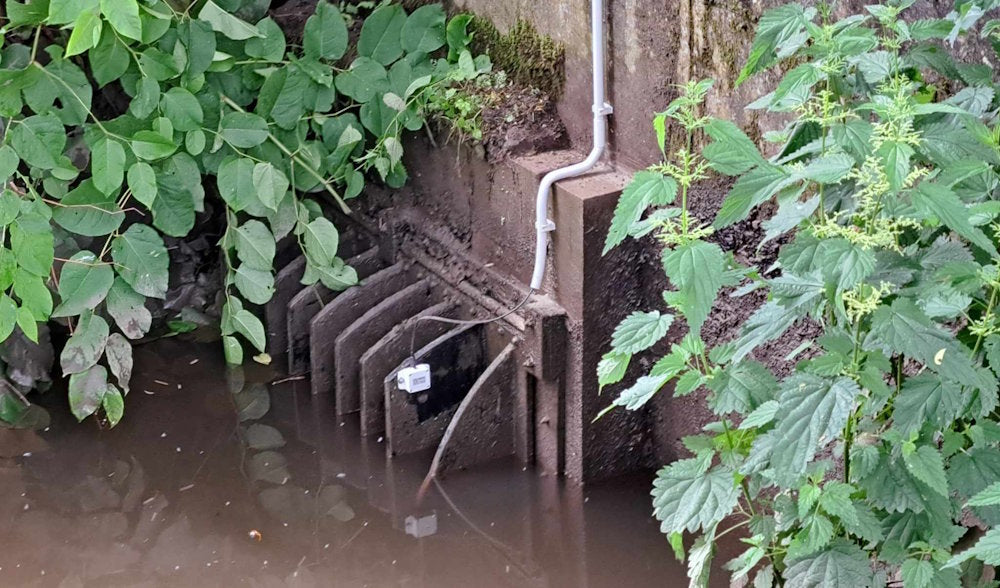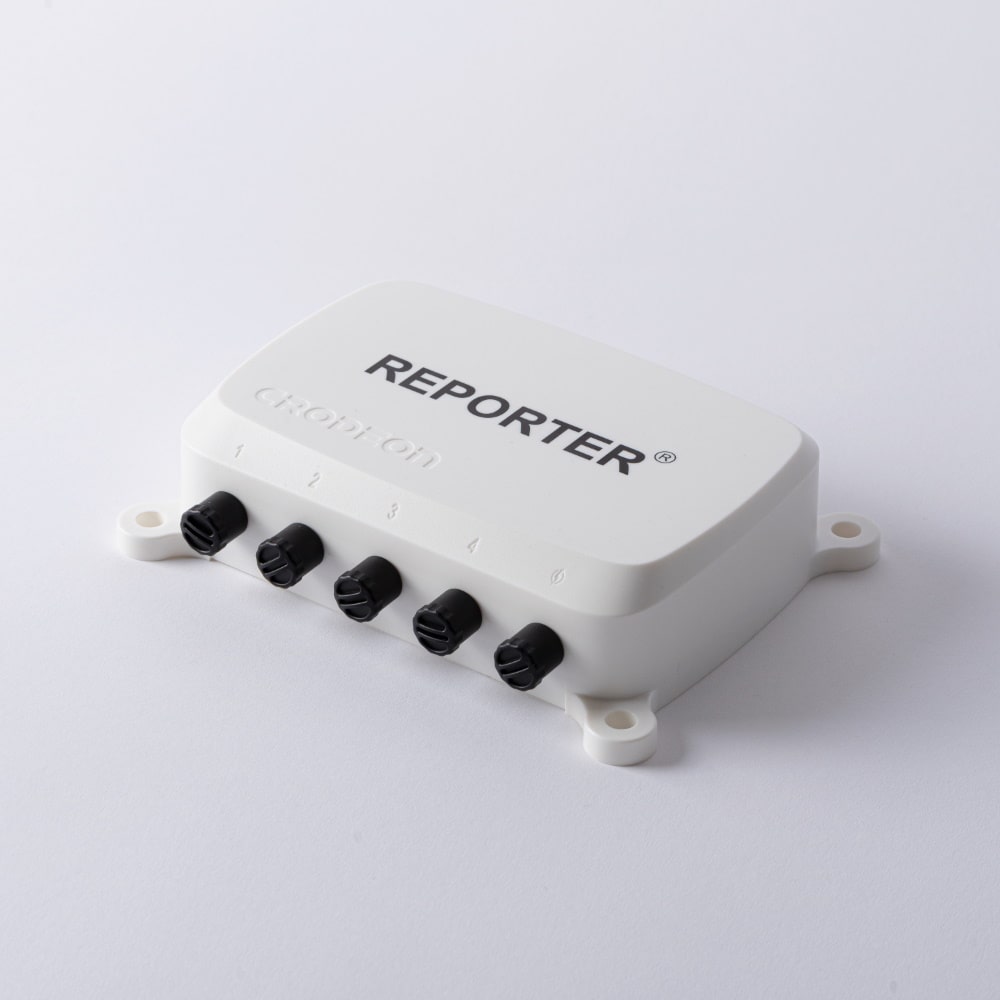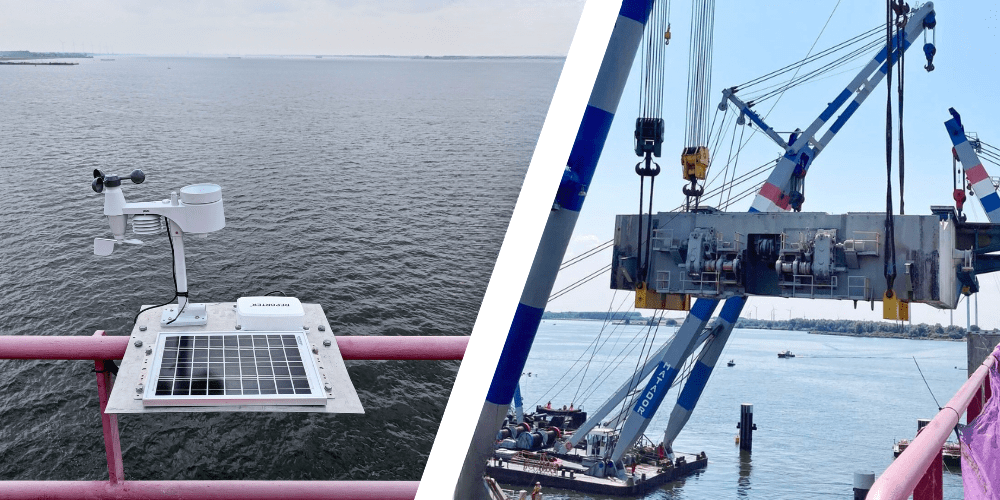Smart overflow monitoring in Aquafin’s sewer network

Aquafin manages and optimises the transport of domestic wastewater in Flanders. A growing challenge is monitoring overflow operations, where during heavy rainfall, sewage water is discharged into waterways to prevent flooding. To explore an innovative idea for monitoring overflow operations using a tilt sensor, Aquafin found the ideal partner in Crodeon to quickly and efficiently assess its potential benefits.
Overflows: necessary but undesirable
Many sewage systems in Flanders are still of the combined type, where both domestic wastewater and rainwater are drained together. During heavy rainfall, the sewer system can become overloaded, leading to flooding. To prevent this, overflow structures are in place: emergency outlets that temporarily discharge excess sewage water into waterways.
Although overflows are essential for keeping streets and neighbourhoods dry, discharging untreated sewage water into nature is far from ideal. Having a clear understanding of overflow operations is crucial for optimal sewer system management. Aquafin has been rolling out an extensive overflow monitoring network for several years, continuing the work of the Flemish Environment Agency (VMM). With this monitoring network, they measure how often and for how long overflows are active.
The challenge: a distorted view of overflow operations
Aquafin currently monitors overflow operations by measuring water levels in the sewer. When the water level in the sewer reaches a certain threshold, it indicates that an overflow is occurring. However, this is not always the case.
Many overflow structures are equipped with a check valve, which prevents water from flowing back into the sewer when water levels in the waterway rise. The problem? If the water level in the waterway rises during an overflow, the valve can be pushed shut. Even though the measured sewer level remains above the threshold, in reality, no overflow is actually happening.
This can lead to incorrect interpretations of overflow duration and frequency. To gain more insight, Aquafin sought a way to measure the actual movement of check valves.


The solution: tilt sensors
Aquafin decided to test tilt sensors on several overflow structures. These sensors measure the angular displacement of the check valve and transmit the data in real-time to Crodeon’s cloud platform (Crodeon Dashboard). This allowed Aquafin to see not only when the water level was high enough for an overflow but also whether the valve was actually open or not.
The installation of the sensors and Reporter was quick and easy. The technical staff from Aquafin’s pilot research department were enthusiastic about the user-friendliness of Crodeon’s system.
“The time from unboxing the sensor to seeing data on your screen is literally no more than two minutes.”
Monitoring projects in remote locations always pose challenges regarding internet connectivity and power supply. Fortunately, thanks to Reporter’s built-in solar panel and 2G/4G internet connection via an integrated SIM card, these challenges were easily overcome.

The results: valuable new insights
By comparing the tilt sensor data with traditional sewer and waterway level measurements, Aquafin discovered key insights:
- More accurate overflow data: in some cases, overflows were active for a shorter period than originally assumed.
- Better problem detection: the sensors enable quicker identification of operational issues, such as blockages in the sewer system.
- Understanding interactions with waterways: the data revealed how a rising water level in the waterway could close the check valve, stopping overflow operations—something that could not be detected with traditional level measurements.
The technical staff from Aquafin’s pilot research department concluded that tilt sensors could be a valuable addition to the existing overflow monitoring network.
“By combining traditional level measurements with tilt sensors, we get a much clearer picture of what’s really happening at overflows with check valves. These insights help us monitor overflows more accurately, making our sewer management more efficient and sustainable.”

Reporter: plug & play remote monitoring in no time
Reporter is Crodeon’s plug & play sensor module for remote monitoring. This IoT sensor device features four connectors, allowing you to attach up to four sensors of your choice. Reporter connects to the internet via its built-in SIM card, which accesses the mobile data network (2G/4G). Additionally, Reporter can be powered by mains electricity or solar energy, making monitoring even in the most remote locations a breeze.
A successful collaboration for smarter water management
Thanks to the use of tilt sensors, Aquafin has gained a much more complete and accurate picture of overflow operations. This technology offers new possibilities for smarter overflow monitoring and faster problem detection.
This project demonstrates how innovative sensor technology can contribute to more sustainable water management. With these insights, future overflow measurements can be further optimised, allowing Flanders to better respond to the challenges of water management in a changing climate.
Want to learn more about how Aquafin manages Flanders’ sewer network? Or explore Crodeon’s solutions for Smart Water.
See also:











